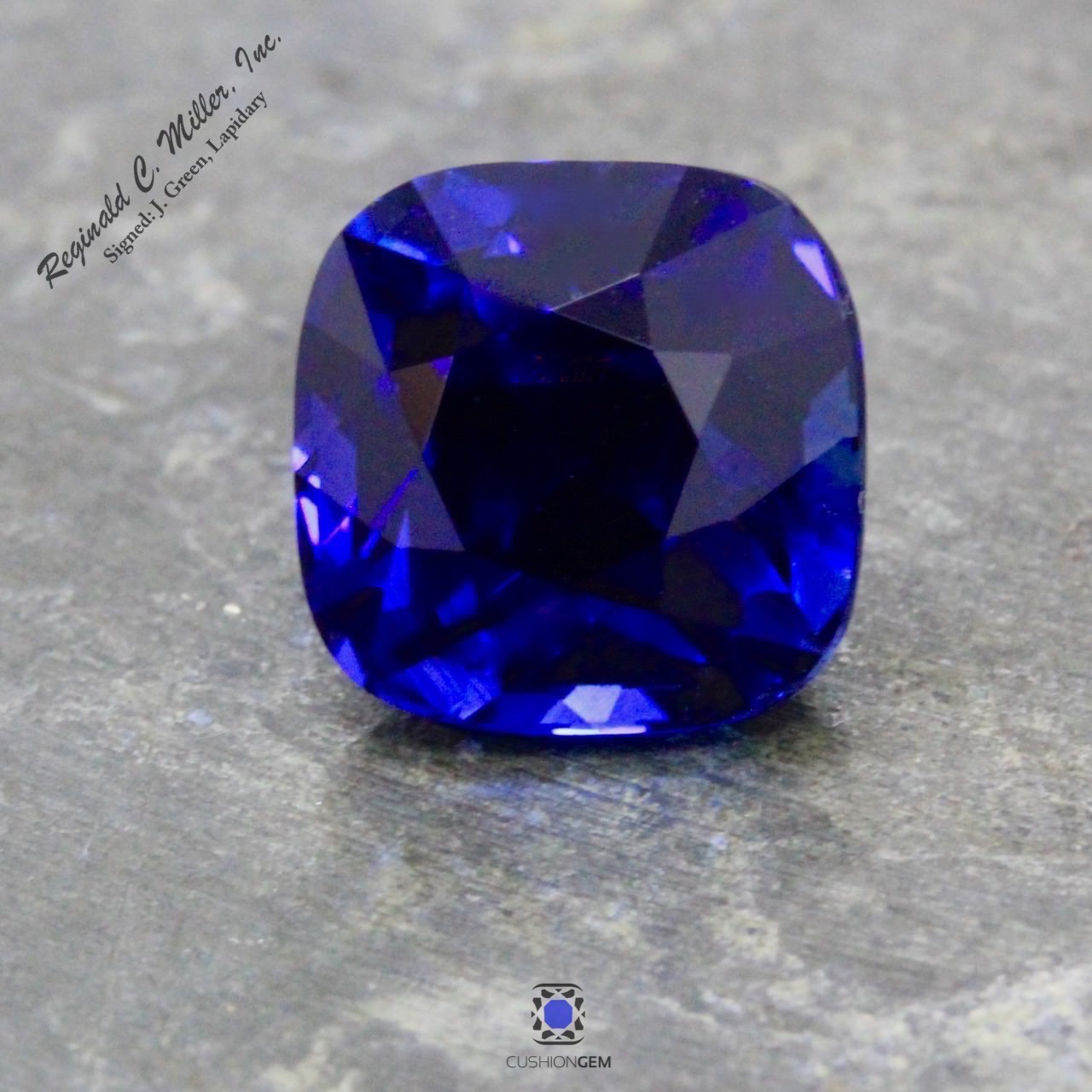Reginald C. Miller, Lapidary
Jerrold Green, Master Cutter
Jerrold Green, propietor of Reginald C. Miller featured in Vanity Fair - August 2016 - download here
In his sun-drenched office high above Manhattan's jewelry district, Jerry Green places a 16 carat natural Kashmir Sapphire between his slender fingers and slowly lifts his hand towards the light. As the stone literally glows a brilliant, clear blue, a visiting gem dealer looks on in awe, recognizing that he is in the presence of a world-class jewel-- a rarity of nature that most gem dealers are privileged to see perhaps only once in a career.
But for Green, who is widely regarded as the industry's premiere lapidary, close encounters with the extraordinary are a daily occurrence. His boyish appearance belies more than three decades of romancing these stones: first as an apprentice to the legendary gem importer Reginald C. Miller, who taught him the ancient art of stone-cutting and polishing; and later as heir apparent to R.C. Miller Inc., taking the company reins upon his mentor's retirement in 1989. Today, gemologists, importers and collectors the world over come to him bearing treasures and seeking his expert advice. "Lapidaries are involved with these stones in an intimate way, like no one else," he explains. "After all, we formed them..." Green's passion for his chosen field grew out of a lifelong love of art and sculpture. After a high-school art teacher kindled his interest in stone-carving, the teenager routinely went from class to class toting a small slab of alabaster, a knife, and a towel to place on his desk. "The teachers didn't mind because I did well in their classes anyway," he says, "and by the end of the day, I had a finished sculpture."
Your seal of assurance for gems cut by Reginald C. Miller Lapidary sold through Cushion Gem.
He was accepted in the prestigious Cooper Union College's architecture program, but opted instead for a degree in studio art from Harper College, majoring in sculpture. After graduation he went to work for his father in the garment industry, taking drawing and painting classes in his spare time. In a studio located in Carnegie Hall, Green found a celebrated teacher who would shape his views on art and life: the painter Norman Raeben, youngest son of the famed storyteller Sholom Aleichem. Raeben trained his students to use all of their senses along with scientific approaches to develop their powers of observation. "In addition to painting, he had us reading Proust and writing about our sense memories," says Green. "He encouraged us to talk about objects not only by using their standard names, but by finding new and original ways to describe them-- a skill that has been extremely helpful in looking at, and talking about, the color of a stone."
Green's determination to make his living as an artisan brought him to Manhattan's Kulicke Stark Institute, where he studied classic jewelry-making techniques and styles such as cloisonniere, cameo, intaglio (the convex of cameos), and gem engraving. After a series of jobs in the industry, he and his portfolio caught the attention of of Eunice Miles, the venerable head of education of the Gemological Institute of America and one of its founders. It was she who sent Green to the exclusive firm of Reginald C. Miller.
Green's first assignment was to polish a 40-carat yellow sapphire that Miller himself had cut. In fact, it would be years before the novice lapidary would actually be allowed to cut one of Miller's world-class stones. "It takes years to develop your eye for these miniature items," he explains. "At first you build your instincts by copying-- by perfecting the guidelines that someone else has laid out for you.
1988 Reginald C. Miller "I'm a perfectionist."
Green's first assignment was to polish a 40-carat yellow sapphire that Miller himself had cut. In fact, it would be years before the novice lapidary would actually be allowed to cut one of Miller's world-class stones. "It takes years to develop your eye for these miniature items," he explains. "At first you build your instincts by copying-- by perfecting the guidelines that someone else has laid out for you."
After joining Miller's elite stable of stonecutters, Jerry Green soon realized that "you're only as good as the person you are fortunate enough to sit next to." Green was schooled in the art and science of his new field by a Japanese master lapidary with 40 years of experience. First he learned to see any "problems" that might be inherent in cutting a particular stone, and then he learned how to solve them, to enhance the stone's unique beauty. How to sustain the extraordinary degree of meticulousness required? "It has to delight you to create it…you have to get real pleasure out of every step."
Green's natural aptitude and devotion to his craft caught Reg Miller's discerning eye. In the mid-1980s, he began accompanying his boss on buying trips to Sri Lanka, Bangkok and Hong Kong. There he saw first-hand the reputation that Miller had built over the decades, since virtually creating the market for natural colored sapphires in the late 1950's and early 1960s. "It was considered an honor to sell to Mr. Miller," Green recalls. "From the mines to the markets, they knew he had an unparrelled eye for fine material. And unlike many merchants, he was always generous with exchange of information-- suppliers were able to learn from him how to get the best out of the material they were showing, whether he bought it or not."
What Jerry Green learned from his mentor (who would call in regularly from his home in South Carolina till his passing in March 2014) remain the hallmarks of his business today: "When someone submits material to you, regardless of its quality, treat it with respect, and them with respect. And when you are presenting your own stones to a client, let the material guide you, and bring out the very best you can in it...never skimp. And above all: your word is everything. Be fully involved in every link of your chain of supply, so that you are able to stand behind your merchandise."
Reginald Miller's engagement party in Southern Pines NC with Jerrold Green (in color) in the background circa 1989
Unfortunately, says Green, such high standards are no longer as common to the gem trade as they once were. In the late 1980s, scientific breakthroughs such as the advent of heat treatments opened the doors for a "science of deception" that caused, in Green's estimation, both quality and integrity to plummet industry-wide. "I'm not negating the beauty of heated stones...some stones are traditionally heat-treated, like aquamarine and amethyst," Green points out. "But there is a pyramid of quality, and if someone wants to spend a considerable sum, I believe it's best put once funds and trust into untreated materials." And of course, full disclosure is a must-- something that does not always occur, he says, when a dealer or retailer has a "corporate mentality," or focuses more on brand-names and cache than on genuine knowledge of gemstones.
While the tools of his trade have expanded to include iPads. iPhones and remote cameras, Jerry Green still spends hours of each day hunched over his lapidary table, painstakingly carving precious stones so that every facet will catch the light.
"The stone you should purchase is the one that causes an emotional reaction, a feeling in the pit of your stomach," he says. "When you get that feeling, that flood of delight...then that's the right one for you.
































